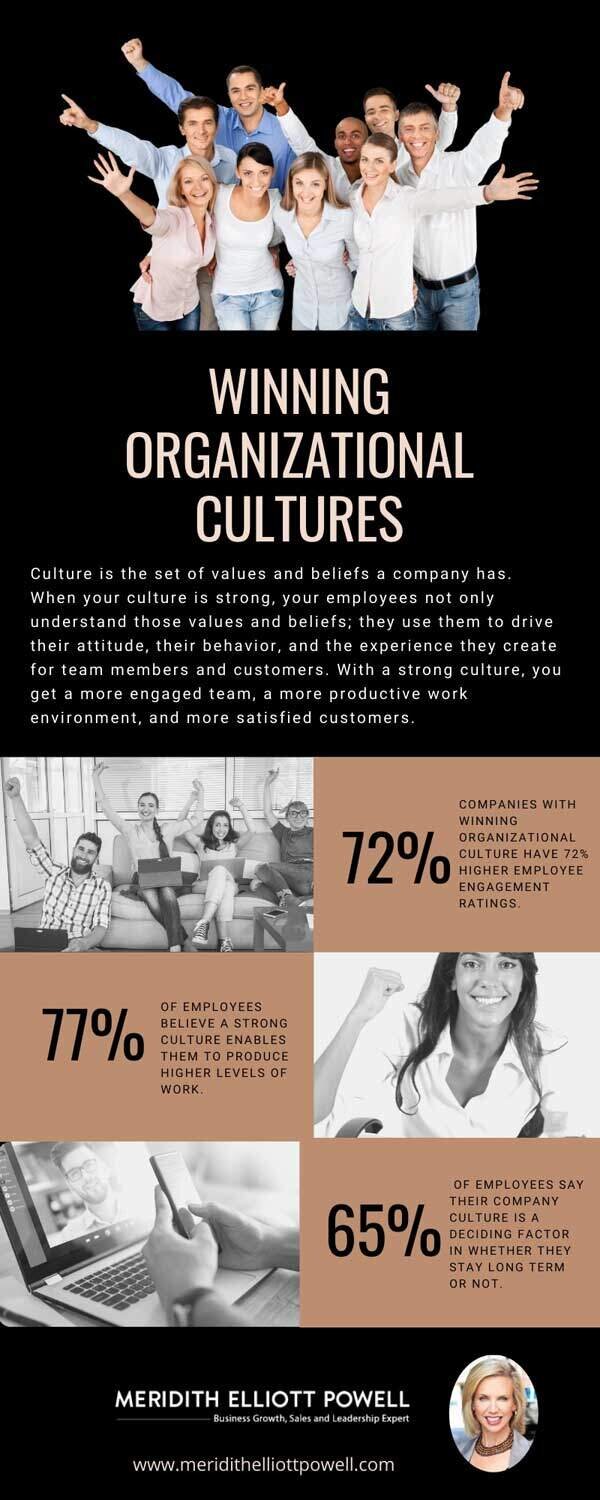Three Strategies to Enhance Company Culture in a Virtual World by Meridith Elliott Powell
Photo by LinkedIn Sales Solutions on Unsplash
One of my favorite clients works in the manufacturing space, and lucky for them, 2020 was a great year. Despite the pandemic, they grew, added more staff, and increased profits by 32%.
Working together, we spent most of the early months of the pandemic navigating the consistent increase in demand. We spent our time helping over three-quarters of their staff learn to work remotely and the other one-third adjust to the new regulations and protocols to ensure a safe working environment.
For the first few months, company culture was the last thing on anyone’s mind. The team was engaged. Most of their employees were grateful to have a job, others driven by the urgent need to help their customers and team members. Pretty much everyone was willing to do whatever it took to keep the company growing.
Now we find ourselves over a year into this crisis, and the tide is shifting. Team members are getting burned out and starting to disengage. They suffer from “Zoom fatigue.” They struggle to achieve work-life balance, and they are getting frustrated.
For the first time since this pandemic began, the leadership team is wrestling with how long will this go on? How do we keep our team engaged? And how do we maintain and enhance our company culture in a virtual world?
Those are great questions that many leaders are challenged with today because building a culture and leading a team in a remote environment is different. It requires new strategies and a new set of ideas.
Before we jump in and start discussing the strategies you need to build and maintain your company culture, let’s talk about what culture is and why it matters, even more so in a virtual world.
Culture is the set of values and beliefs a company has. When your culture is strong, your employees not only understand those values and beliefs; they use them to drive their attitude, their behavior, and the experience they create for team members and customers. With a strong culture, you get a more engaged team, a more productive work environment, and more satisfied customers.
Now culture matters because employees are more engaged, more productive, and tend to stay longer when they work for a company whose values and beliefs are aligned with theirs. Let’s look at the facts: companies with winning organizational cultures have 72% higher employee engagement ratings. 65% of employees say their company culture is a deciding factor in whether they stay long-term or not, and 77% of employees believe a strong culture enables them to produce higher levels of work.
So, culture matters, and in a world where employees can work from anywhere and for anyone, giving them something to believe in, be a part of, and contribute to is one of the best tools you have to keep top talent.
There is so much value in investing in your company culture, so how do you get it right in a virtual world and working with a remote team?
1. Overly Communicate
Very few leaders communicate enough and far fewer communicate enough in a virtual world. You have to realize the moment your team started working from their homes, they felt disconnected, shut off, and isolated. They are unsure of how your company is doing, what challenges you’re facing, what you are focused on for 2021, and how they can best contribute.
You need to be answering their questions, and much more. You need to ensure that you communicate with your team often and provide opportunities for them to communicate with you. Communication is a two-way street, and if you want to drive culture, you need to ensure your team is talking to you as much as you are talking to them.
BEST PRACTICES: Here are some of the best ideas we see successful leaders today putting into place.
Weekly kick-off video – the CEO starts each week with a video that lets the team know where the focus needs to be, what she expects of them, and then rewards and recognizes individual contributions.
Town Halls – monthly or quarterly, town halls with the CEO and/or leadership team allow employees to get relevant updates and, more importantly, ask questions, get first-hand information, and heard on significant challenges.
Monthly Financial Updates – humanizing the business model by allowing employees to learn from the CFO how the company makes money, what they can impact, and how their contribution directly connects to the bottom line. This does more than any other strategy we have seen to decrease expenses and drive revenue.
2. Create Connection
Gone are the opportunities to grab lunch with a co-worker, tell a joke before the meeting starts, or participate in the monthly birthday celebration. What remote work has given us in productivity and efficiency has cost us in the areas of communication and relationship building.
People spend so much time at work, even if that work is remote. To be successful; they want to feel like they are connected to their co-workers, know their boss, and feel heard and understood by the people they work with. In a virtual world, you have to be more innovative to create that, and you have to build on those opportunities proactively.
BEST PRACTICES: Here are some of the best ideas we see successful leaders putting into place
TECH MATTERS – just like you invested in your office space, you need to invest in technology. If you want people to feel connected, they need to have the tools. Video is critical, strong audio is a requirement, and the right software and tools make it so much easier to engage.
CREATE SPACE – allow people to connect just like you did at work. Instead of the monthly pot luck dinner, create personal channels on your SLACK, TRELLO, or intranet accounts. Start rooms where team members can talk about their pets, taking care of aging parents, or what it is like to homeschool your kids in the age of COVID.
DONUT MEETINGS – beak the silos and communication issues by building relationships between departments and leaders you need to work together. Donut meetings are meetings set up between two and three team members who don’t interact regularly but need a better connection to work more effectively together.
3. Bind with Purpose
At the end of the day, in a traditional or remote work environment, people want to do work that matters, and they want to be a part of something bigger than themselves.
If you want your team to engage, then you need to give them something to engage in. That something is a purpose, who you are, what you stand for, and the impact you are making.
BEST PRACTICES: Here are some of the best ideas we see successful leaders putting into place
BEGIN EVERY MEETING – and end every meeting reminding your team members of your purpose, and how what they are doing matters, the impact they are making.
REWARD/RECOGNIZE – team members and situations that underscore the importance of your purpose. Tell stories and develop case studies that detail how the company’s purpose is to create change and help people.
NORTH STAR – use your purpose and core values as your litmus test, your north star in deciding whom to promote, whom to hire, and what new initiatives to implement in your company. You show your team just how important the core values and purpose are and why they matter to the company’s success.
Your Culture Is Your Best Investment
Yes, investing in building culture in a work environment can be challenging, but it’s not impossible. It is also one of the best investments you can make. One of the few advantages you have left in this constantly shifting and highly competitive marketplace is your team’s engagement level. Invest in your culture, and your team will invest in you.
Meridith Elliott Powell, CSP, is a business growth expert, keynote speaker, and award-winning author. Her new book, THRIVE: Strategies to Turn Uncertainty into Competitive Advantage, shares nine proven principles for leveraging uncertainty to grow your business and drive sales. It is available from Sound Wisdom on June 22, 2021—preorder your copy today! This blog originally appeared here on meridithelliottpowell.com and has been edited for inclusion on The Sound Wisdom Blog. Subscribe now for weekly inspiration and business insight delivered straight to your inbox (we won’t spam you—we promise!).




